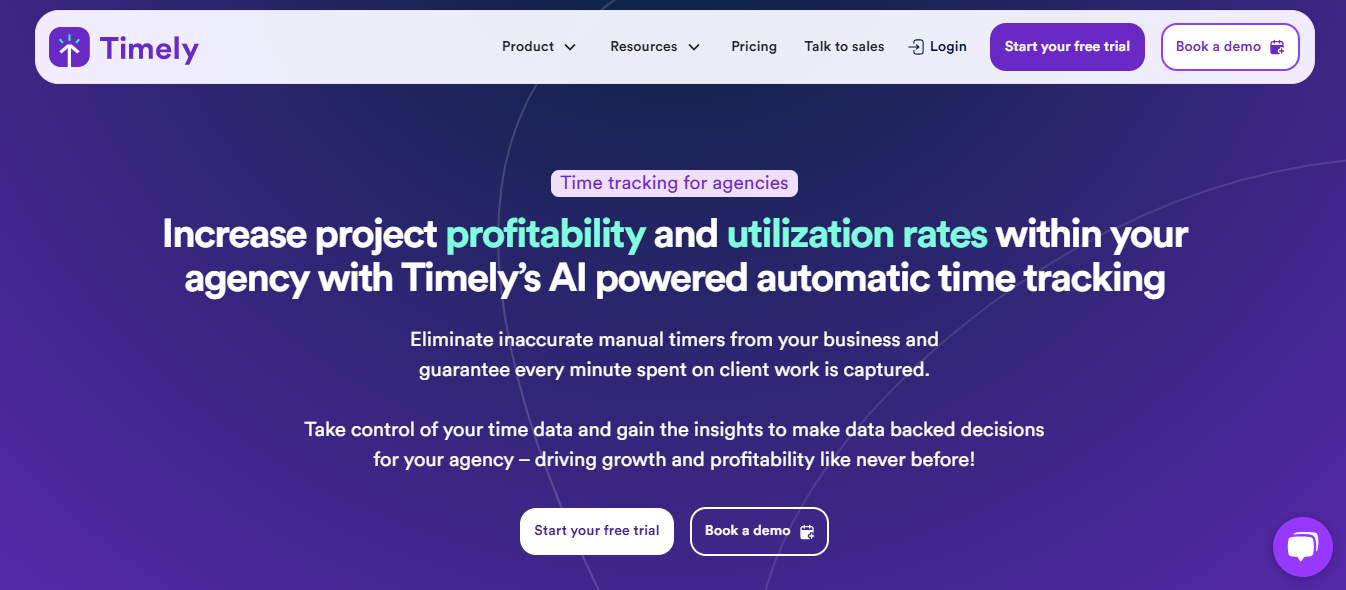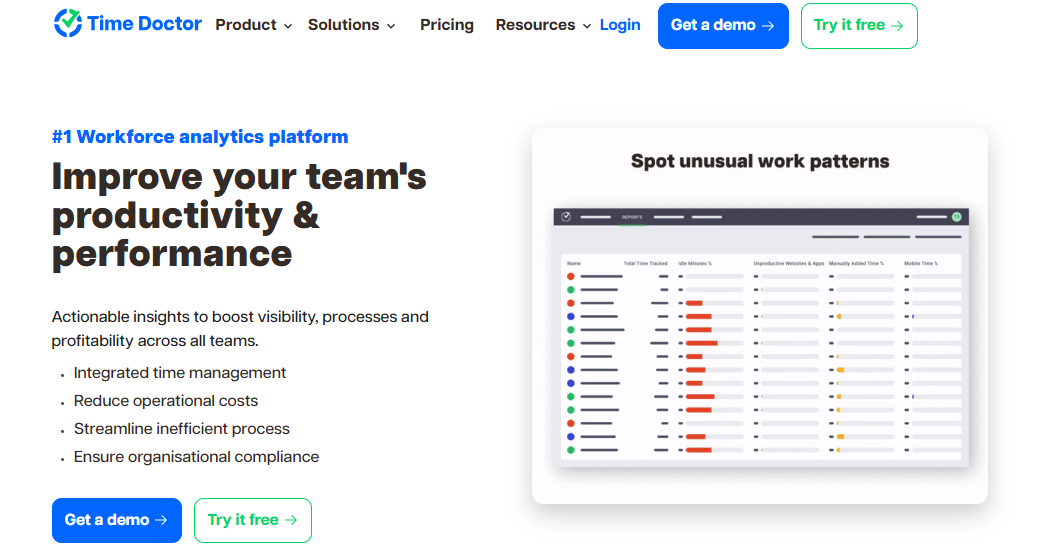Life can become overwhelming quickly when you try to juggle work commitments, family responsibilities, social obligations, and personal interests. Without an organized plan, it’s easy to become stressed out and forget essential tasks or events. Even worse, you may put your health and well-being on the back burner as you struggle to keep up with your busy schedule. If you can relate to this scenario, you’re not alone. Fortunately, this article can help you find balance and reduce stress with practical tips and tools, including the best AI scheduling assistant.
Antispace’s AI-based productivity operating system will help you achieve your goals as you balance a busy schedule with these practical tips and tools. Its intelligent technology organizes your tasks and calendar to help you find a balance so you can enjoy life again.
Why It's Important To Manage Your Schedule

Schedules, calendars, and time management are the most criminally underused ways of increasing personal and professional success. Inefficiently used time leads to guaranteed money losses and work for you and your business.
Up to 89 percent of workers admit to wasting time at the office, but that’s just through distractions or momentary diversions. The structural time lost through lousy time management can result in hours, days, or weeks of waste. To get the most out of your time, you must start by getting everything sorted out on your agenda.
Working Smarter, Not Harder: The Power of Scheduling
While an effective schedule can significantly improve work-life balance, it can also lead to higher levels of job success—better-managed time results in more work getting done better, period.
Reining in your schedule can have many different outcomes for you, but here are a few ways it can provide a big on-the-job boost:
Increased Productivity
Tech titans, corporate CEOs, world-famous entrepreneurs, and prolific authors generally have very few things in common aside from high levels of achievement in their respective fields. A daily schedule is one common element among the most successful people in all sectors.
A daily schedule doesn’t just tell you what you’ll be working on during the day—it can also help maximize your productivity. One of the biggest drags on workplace productivity is an unfocused working style, constantly switching tasks as new problems need addressing. While staying flexible and dynamic in your role is essential, endless task-switching will likely result in a massive productivity dip. Use your schedule to safeguard against this.
Accelerate Your Career with Productive Time Management
Organize your day into time blocks, each focused on one specific type of activity. Keeping these blocks highly focused and limited to 90 minutes raises peak productivity overall. Working more productively increases your work output and overall employee value. Locking down your schedule now can significantly boost your career trajectory going forward.
Maximized Synergy
An effective schedule isn’t just one that fits your needs—it also needs to fit the needs of those around you. In the modern workplace, working at maximum productivity is nearly impossible if you and your team are on entirely different pages. While an unfathomable number of factors affect team synergy, mutual respect for—and shared access to—one another’s schedules is a straightforward measure that goes a long way.
Streamlining Meetings and Calls for Maximum Efficiency
Scheduling meetings and calls can transform from a never-ending back-and-forth dialogue to a simple assessment of available time slots. Shared schedules also let others know exactly what project you’re working on, reducing the need for constant “catch up” meetings.
You’re naturally going to work better if you’ve got your team behind you every step of the way. Getting ahead professionally means surrounding yourself with people just as prepared for success as you are, and a team of people with well-managed schedules is one ready for any professional challenge.
Side Hustle Development
Twenty-eight percent of Millennials now maintain some kind of side hustle, which is growing across all demographics. Making money beyond your main job can be a great way to boost your income and develop additional professional skills—but it can also prove to be highly stressful and a huge time drain. As valuable as a side hustle can be, you never want your second job to impact your primary job. Lazy scheduling can leave you juggling responsibilities across jobs at the wrong times.
Use your schedule to keep your hustles from intermingling, allowing you to focus specifically on what needs to be done at precisely the right time. Side hustles are only valuable time investments if you do them smartly. A side gig that negatively impacts my work-life balance, mental health, or personal relationships isn’t worth it. When planning my side hustle, I develop it alongside my schedule to ensure everything works together.
Personal Assessment Time
One of the best ways to become more productive is also one of the most forgotten: sitting down, looking at your slate, and thinking about what could work better. Many workers are so slammed with professional and personal responsibilities that they never really have the time to make long-term plans for themselves or their careers. Getting your schedule under control can allow me to sit down and make a strategy.
I block off part of a day every month to create long-term goals and assess my current position relative to my desired position. Goal setting and evaluation are some of the best ways to increase professional motivation in the long term. It’s essential to have a schedule that allows for time to focus on the future.
Related Reading
- Scheduling Conflict
- How to Improve Efficiency at Work
- Calendar Management
- Best Time Management Tools
- Scheduling Automation
- Meeting Fatigue
How To Balance A Busy Schedule With These 12 Effective Tips

1. Kick Off Your Day with a Schedule
Every productive day starts with a plan. You should create a realistic schedule for everything you want to accomplish that day to use your time efficiently. The easiest way to start planning your workday is by making a to-do list of your daily tasks. A to-do list isn’t a groundbreaking technique, but it can make an incredible difference in how well you use time throughout the day. Each time you complete tasks on your to-do list, cross it off physically.
This practice gives you a sense of accomplishment and allows you to review everything you finished that day. Keeping track of your work will help you set priorities for the next day.
2. Identify Your Most Important Tasks
Once you have created a to-do list, it’s time to organize it in order of priority. Prioritization lets you use your time productively and focus on the day’s most critical tasks. There are many different approaches to prioritizing tasks on your to-do list. Pick out your top three items to accomplish and get started. Sort your tasks into three tiers of importance:
- High
- Medium
- Low
3. Time Blocking
Time blocking involves scheduling specific time blocks for different daily tasks or activities. This technique helps you allocate dedicated time for each task, making focusing and minimizing distractions easier. Assign time blocks to:
- Functions
- Meetings
- Breaks
- Personal activities
Color-coding your time blocks can further enhance organization and visibility in your schedule.
4. Avoid Multitasking
While multitasking may seem efficient, it often leads to decreased productivity and increased stress. Focusing on one task at a time allows you to complete tasks more accurately and efficiently. Prioritize tasks, work on them sequentially, and avoid switching between tasks rapidly. Concentrating on one task can allow you to give it your full attention and achieve better outcomes.
5. Limit Distractions
Everyone gets distracted. Whether emails from team members, social media, co-workers, kids, family members, phone calls, or random thoughts, countless things can derail your progress. While you can’t control all of them, it is vital to make a dedicated effort to limit the number of things that can distract you.
Time management self-reflection: Identify the things that distract you and devise a solution to minimize that distraction.
- Do you need to put your phone in the other room?
- Should you turn off notifications for texts or emails?
- Do you need to block social media from my work computer?
6. Leave Emails for Later
Email can be an unexpected time sink. Every time you stop what you’re doing to check your email, you’re derailing your productivity. Switching between different tasks takes time and mental energy.
You can schedule a specific time to check your email or wait until you finish your current job before checking your email.
Note: If you’re going to set a specific time to check your email, make sure that you communicate this to your co-workers and set clear expectations.
7. Don't Overcommit
Speaking as someone who has stretched herself too thin a few times, I can assure you it isn’t a good feeling; it's pretty overwhelming and undoubtedly exhausting. This is a key component when it comes to managing the balancing act. Don't be afraid to tell your friends no and stay in for an evening with the family, catch up on my studies, or just get a little rest.
8. Divide Your Time and Conquer Your Tasks
Once your to-do list is written down, you can get your tasks as specific as you want.
For example:
- Write your daily routine to look like this: 8:00 a.m.
- Head to the office 8:30 – 8:55 a.m.
- Get organized and go over emails 9:00 – 9:30 a.m.
- Weekly team meeting 10
- 11:30 a.m. Work on client projects
This type of schedule is highly structured and can keep you on track throughout the day, especially if you often get distracted. Whether you set time blocks for each activity or write a to-do list, don’t forget to take breaks and give yourself free time.
9. Set Business Hours and Stick to Them
Before you create your schedule, think about what time of day you work best. Are you an early bird, or do you work best in the afternoon or evening? Then, set your work hours within the times of day that work best for you. This can take a little trial and error, but once you find your ideal schedule, stick to it, and you’ll likely be more organized.
10. Color-code your Calendar from Hot to Cold
Picture it: You just got into the office and are viewing your day’s schedule. At first glance, you may feel overwhelmed looking at a screen filled with gray time blocks. You may want to color-code your schedule to organize your day better and stay on track. Color-coding your schedule can help you visualize your blocks as:
- Meetings
- Work periods
- Breaks
- Free time
One way you can color-code your calendar is through color psychology.
For example, red is bold and usually associated with power or urgency. You can use this color to highlight your most important tasks, whether an upcoming deadline or a meeting. Blue, on the other hand, is a calming color. You could underline my breaks or my favorite tasks in this color.
11. Give Yourself Incentives
When you’re dealing with a busy schedule week after week, you might feel burnt out or have the urge to skip a few tasks. Instead of opting out, you can power through a busy day with incentives or small rewards for doing your work.
These incentives can occur as often as you want—it’s entirely up to you. They can also be as large or small as you’d like. For example, you could treat yourself to a latte or a few chapters from your favorite book after work.
12. Set Aside Certain Days Every Week for Certain Tasks
Your schedule might be packed between errands, social life, and work. Set aside specific days for certain tasks to ease your stress and make your schedule more consistent. For example, Sunday is your day to buy groceries and prepare weekly meals.
Then, you can meet up with friends on Friday evenings for a casual dinner or happy hour. This set schedule can help you organize your life and get into a routine.
Antispace: AI-Powered Productivity Platform
Antispace is a gamified, AI-powered productivity operating system that transforms how you approach your daily workflow. We seamlessly integrate with your essential tools:
- Calendar
- Notes
- Slack
- GitHub
Our AI assistant handles everything from email management to task organization. Antispace acts like a virtual executive assistant by reducing context switching and automating routine tasks, letting you focus on what matters while our AI handles the rest.
Whether you're brainstorming ideas, managing communications, or coordinating projects, Antispace turns productivity from a chore into an engaging experience. Get started for free with one click today.
4 Time Management Techniques To Balance A Busy Schedule

1. Mastering Task Management with Eisenhower’s Urgent-Important Matrix
We discussed the Eisenhower Matrix in terms of time management strategy. Now, it’s time to dig deeper. This approach called the urgent-important matrix, allows you to prioritize and sort the tasks on your to-do list.
Here’s how to create the Eisenhower Matrix:
- Draw a grid with four quadrants to create four boxes.
- Across the top, write Urgent above quadrant box one and Not Urgent above quadrant box two.
- Going down the left side of the grid, write Important to the left of the quadrant one box and Not Important next to the quadrant three box.
- Now, for each task, you ask two questions, “Is this important?” and “Is this urgent?”
- Then, place each task into the box that matches your yes or no for each question.
Now that you know what’s important and urgent, do these tasks first.
- For the things in quadrant two that are important but not urgent, schedule them to be done later.
- The urgent but not important tasks in quadrant three can be delegated.
- The remaining tasks in quadrant four can be removed from your list until they become urgent or essential.
2. Prioritize Tasks with Pareto Analysis (the 80/20 Rule)
The 80/20 rule is a technique created by the Italian economist Vilfredo Pareto. It’s the idea that 20% of actions are responsible for 80% of outcomes. Pareto analysis aims to help you prioritize tasks that are most effective at solving problems.
How it works:
- List some of the problems you are facing. For example, your grades are slipping. Identify the root cause of each issue. Your grades are slipping because you spend too much time on social media or any other sort of distraction.
- Assign a score to each problem: Assign higher numbers to more critical issues.
- Group problems together by cause: For example, group together all the problems caused by spending too much time on social media.
- Add up the scores of each group: The issue you should work on first is the group with the highest score.
- Take action.
3. Avoid Burnout with the Famous Pomodoro Technique
Francesco Cirillo developed the Pomodoro Technique in the early 1990s. It is a popular time management method that helps individuals break down their work into (usually) 25-minute sprints.
Here’s how it works:
- Choose a task you want to complete
- Set your timer for 25 minutes and focus solely on that task until the timer goes off
- Take a short 5-minute break
- Start another 25-minute session
This technique helps increase productivity by allowing you to focus completely on one specific task rather than multitasking. Breaking up tasks into smaller increments can also help make them feel less daunting and more achievable.
4. Get in the Zone with the Flowtime Technique
The Flowtime Technique is a time management strategy that focuses on working in short, uninterrupted blocks of time.
It’s a variation of the Pomodoro technique that:
- It involves focusing solely on one task and taking a break from work when feeling like it.
- It doesn’t have specific time limits for how long you should work or how long your breaks should be.
- This method helps prevent distractions by allowing you to fully concentrate on one specific task without interruption from emails or notifications.
For example, let’s say you have three blog articles to write for the day. Following the Flowtime technique, you set a timer for an hour. During those 60 minutes, you eliminate all distractions and write without interruption. Once the timer goes off, I take a short break. I repeat this focused time block–break cycle until I complete the first article before jumping on to the next one.
Related Reading
- Deadline Management
- How to Manage Multiple Calendars
- AI Employee Scheduling
- AI Appointment Setters
- Best Time Blocking Apps
- Best Daily Planner Apps
- Best Scheduling Apps for Small Business
- Reclaim AI Alternatives
7 Best Tools To Manage Your Time And Balance Your Busy Schedule
1. Antispace: The AI-Based Productivity Operating System

Antispace is a gamified, AI-powered productivity operating system that transforms how you approach your daily workflow. We seamlessly integrate with your essential tools:
- Calendar
- Notes
- Slack
- GitHub
Our AI assistant handles everything from email management to task organization. Antispace acts like a virtual executive assistant by reducing context switching and automating routine tasks, letting you focus on what matters while our AI handles the rest.
Whether you're brainstorming ideas, managing communications, or coordinating projects, Antispace turns productivity from a chore into an engaging experience. Get started for free with one click today.
2. Toggl Track: The Time Tracking Tool for Productivity Optimization

Toggl Track is a time-tracking app designed to help users monitor their time usage. It offers features for starting and stopping timers using a web timer or manual entry and organizes time by projects and tasks. Detailed reports provide insights into time usage and team activities. Toggl Track integrates with various apps, supports mobile and desktop platforms, and includes reminders to ensure timely logging.
Effective Team Management Through Transparent Time Tracking
Toggl Track also offers detailed reporting and insights into time usage and integrations with tools like Asana and Slack. Available on mobile and desktop, it supports team collaboration, making it an essential tool for optimizing productivity and time management. In addition to its desktop application, Toggl Track provides mobile apps, enabling users to track their time on the go, whether in the office or working remotely.
The software supports team collaboration, allowing managers to:
- Invite team members
- Monitor their time tracking
- Gain insights into overall team productivity
3. Timely: Automated Time Tracking for Optimizing Productivity

Timely is a powerful, automated time-tracking software for agencies designed to optimize productivity through discreet background operations. It captures time spent on various apps and websites, generating a complete daily log of activities. An intuitive drag-and-drop interface simplifies project management and provides valuable insights into productivity.
Timely also supports invoicing and integrates with accounting software like QuickBooks. Its advanced task management is an add-on, and its high price may be prohibitive for smaller businesses. It also lacks payroll integration, making it less suitable for those seeking an all-in-one solution.
4. TimeCamp: Project Management and Time Tracking Software

TimeCamp is a cloud-based agency time tracking and project management software designed to enhance productivity through:
- Automated processes
- Accurate timesheet generation
- Easy billing and invoicing
It aims to eliminate manual input and traditional documentation, ensuring accurate recording of billable hours and fair employee compensation. It features an automated time tracker with a one-click timer and keyword-based tracking.
Effortless Time Tracking and Billing for Maximum Accuracy
It is designed to capture billable hours accurately while operating discreetly in the background to reduce user effort. The productivity monitoring tool lets employers see how employees spend their work hours, including:
- Details on every app
- Webpage
- Document used
It offers thorough reporting that delivers actionable insights on:
- Individual and team performance
- Project profitability
- Attendance
- Work patterns
- Finances
5. Jibble: Time Tracking with Scheduling and Geolocation

Jibble is a cloud-based time-tracking solution designed to help businesses maximize employee productivity by ensuring accurate work-hour recording. It allows employees to easily log billable hours, using technologies like facial recognition and geolocation to improve clock-ins and clock-outs.
This automation reduces reliance on traditional time clocks and manual timesheets, minimizing payroll errors and saving time. Jibble provides an easy-to-use time-tracking solution where employees can log hours via a clock-in and clock-out interface. It uses geolocation to verify clock-ins at approved locations, with GPS data displayed on timesheets.
6. Time Doctor: A Time Tracking Tool for Managing Remote Employees

Time Doctor makes it easy to track time accurately with the click of a button. You simply start the timer to start tracking your work time automatically. For Managers, Time Doctor will let you know when and what your team is working on.
The visual reports dashboard shows tables and charts showing hours worked daily, weekly, and monthly and over a custom date range. The reports also show time usage stats based on time spent on various projects and tasks, daily timeline reports, poor time usage, GPS tracking, and more.
7. Harvest: Time Tracking for Invoicing and Billing

Harvest time-tracking software aims to streamline the billing process and create accurate timesheets. It helps agencies, from a single interface, generate:
- Reports
- Bill clients
- Track project budgets
Let Our AI-based Productivity Operating System Handle Your Boring Work
Antispace is a gamified, AI-powered productivity operating system that transforms how you approach your daily workflow. We seamlessly integrate with your essential tools:
- Calendar
- Notes
- Slack
- GitHub
Our AI assistant handles everything from email management to task organization. Antispace acts like a virtual executive assistant by reducing context switching and automating routine tasks, letting you focus on what matters while our AI handles the rest.
Whether you're brainstorming ideas, managing communications, or coordinating projects, Antispace turns productivity from a chore into an engaging experience. Get started for free with one click today.
Related Reading
- Clockwise Alternatives
- Skedpal vs Motion
- Motion vs Reclaim
- Motion Alternatives
- Reclaim AI Alternatives
- Best Scheduling Apps for Small Business
- Akiflow vs Motion
- Motion vs Clickup
- Sunsama vs Motion
- Calendly Alternatives